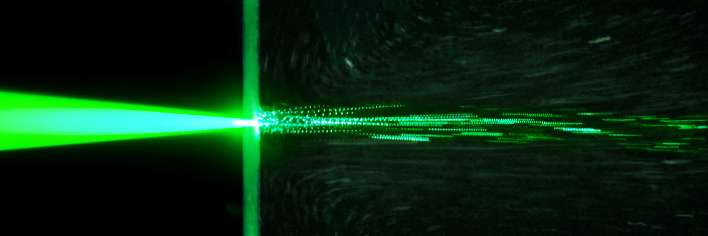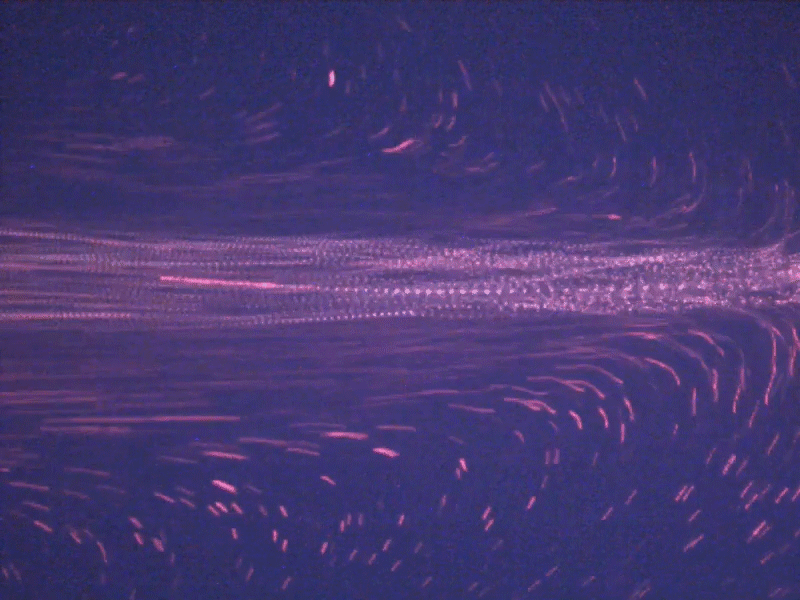Unexpected discovery leads to new theory of liquid streaming

Researchers at the University of Houston were studying the nonlinear transmission of light through an aqueous suspension of gold nanoparticles when they noticed something unexpected. A pulse laser appeared to have forced the movement of a stream of liquid in a glass laboratory cuvette.
As they investigated, they realized something more complex was a work than a transfer of momentum from the laser photons to the liquid. Their observation led to a new optofulidics principle, explained in a paper published Sept. 27 in the journal Science Advances.
"It was not so simple," said Jiming Bao, associate professor of electrical and computer engineering at the University of Houston and lead author of the paper. "The momentum from a laser isn't strong enough to activate the movement."
Light usually passes straight through water without any absorption and scattering, so Bao said even strong momentum from the photons wouldn't generate a liquid stream. The gold nanoparticles turned out to be key - researchers found that the nanoparticles were initially needed to create the stream because they reacted to focused laser pulsing to create a plasmonic-acoustic cavity, a structure Bao described as a "bowl" that formed on the inner wall of the cuvette, a type of glass test tube.
The moving stream of liquid is triggered by ultrasound waves generated by the expansion and contraction of the nanoparticles, which occurs when nanoparticles on the cavity surface heat up and cool down with each laser pulse. The stream was captured on video.
Once a cavity is created, the nanoparticles can be removed. Bao said streaming can be induced in any fluid.
The discovery has the potential to significantly improve work in a number of fields, including lab-on-a-chip experiments involving moving liquids, such as a droplet of blood, at a microscopic scale.
The driving of flow by acoustic wave is called acoustic streaming and was discovered by British scientist Michael Faraday in 1831; it is now widely used in microfluidics. The generation of ultrasound by gold nanoparticles, called photoacoustics, is also well known and is used in biomedical imaging.
This new optofluidics principle couples photoacoustics with acoustic streaming. "(It) can be used to generate high-speed flows inside any liquids without any chemical additives and apparent visible moving mechanical parts," the researchers wrote. "The speed, direction and size of the flow can be controlled by the laser."

In addition to Bao, researchers involved in the project include co-first authors Yanan Wang and Qiuhui Zhang, Zhuan Zhu, Feng Lin, Shuo Song, Md Kamrul Alam and Dong Liu, all of UH; Jiangdong Deng of Harvard University; Geng Ku of the University of Kansas; Suchuan Dong of Purdue University; and Zhiming Wang of the University of Electronic Science and Technology of China. Bao, Wang and Lin also have appointments at the University of Electronic Science and Technology of China.
Bao said more work is needed to better understand how the gold nanoparticles form the plasmonic-acoustic cavity and to determine better ways to generate a liquid stream, among other things. But there will be a number of applications for the newly discovered principle.
"Laser streaming will find applications in optically controlled or activated devices such as microfluidics, laser propulsion, laser surgery and cleaning, mass transport or mixing," the researchers conclude.
More information: Y. Wang el al., "Laser streaming: Turning a laser beam into a flow of liquid," Science Advances (2017). advances.sciencemag.org/content/3/9/e1700555
Journal information: Science Advances
Provided by University of Houston





















